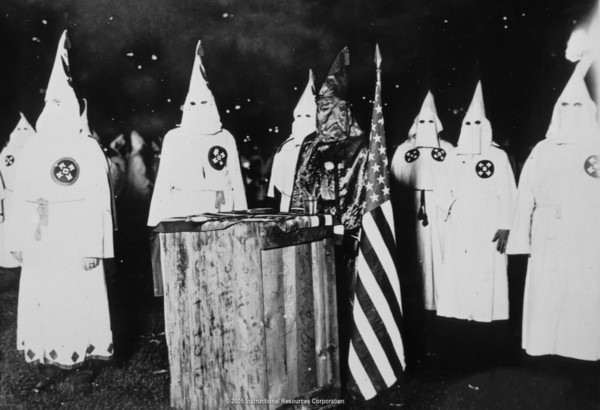Introduction

Central Question: In what ways were the civil rights of Americans and immigrants threatened during the 1920s?
With the fears and trauma of World War Iwar fought in Europe from 1914 - 1918 behind them, Americans eagerly looked forward to an era of peace and prosperity in the 1920s. While this goal became a reality for much of the population, minority groups within the United States found the 1920s a more difficult decade to navigate. In the immediate aftermath of the war, the sense of nationalismintense love and pride for one's country remained high, leading many Americans to question anything that appeared un-American or foreign. Newly arrived immigrants with unknown customs and traditions, varying religious faiths, and more radical political views were regarded with disdain and skepticism. A "Red Scare"fear of communism in the United States between 1919 - 1920 swept the nation as fears of communistpolitical and economic system whereby the private ownership of property and resources is replaced with public, government control infiltration and influence spread in the wake of the Bolshevik Revolution1917 revolution in Russia when the Bolshevik (communist) Party rose to power in Russia. First Amendmentguarantees the right to freedom of religion, speech, press, assembly, and petition rights were violated in the name of national security, and immigrants were often targeted and sometimes deported for their "foreign ways." For a nation founded on democratic principles and the rule of law, the 1920s highlighted the disrupting effect fear could have on an otherwise orderly society.
Following successful completion of this lesson, students will be able to:
- Identify discriminatory methods used to restrict immigration during the 1920s.
- Describe the origins and influence of the Red Scare in the United States as well as the various tactics used to suppress communism.
- Evaluate the circumstances surrounding the Sacco and the Vanzetti trial.
- Describe the rise of intolerance in the post-war period, including the re-emergence of the Ku Klux Klan.
- Identify Marcus Garvey and the rise of the "Back to Africa" movement.
The above objectives correspond with the Alabama Course of Study: US History 11 Objectives: 2.4 & 5.
This lesson incorporates the following Literacy Standards: R1, R2, R5, R7, R9, W4, W8 & W9.
Photograph Citation:
Ku Klux Klan member in a midnight ritual in 1922 IRC, 2005. Image. Discovery Education Web. 3 April 2014. <http://www.discoveryeducation.com/>.